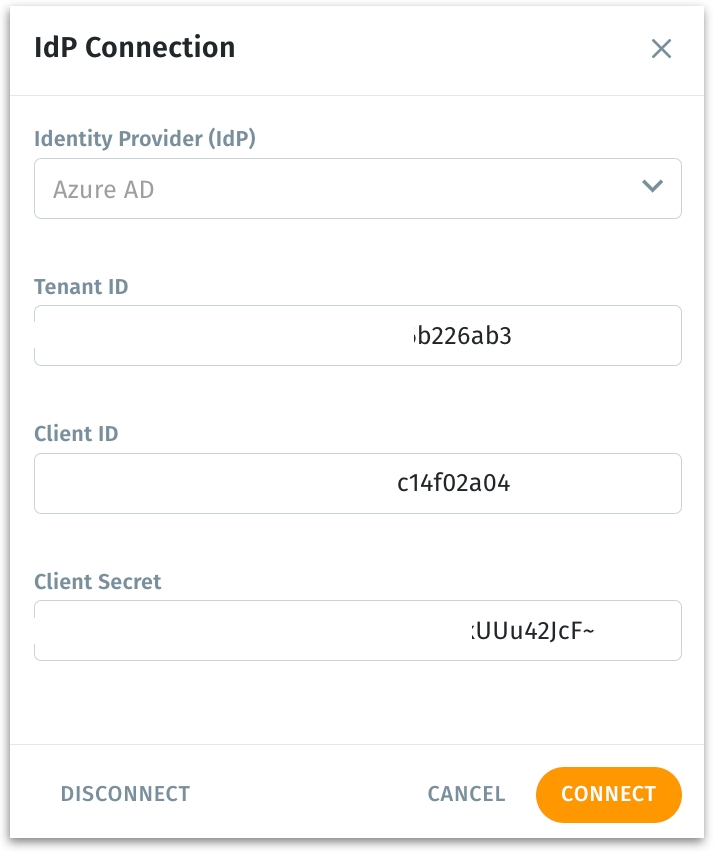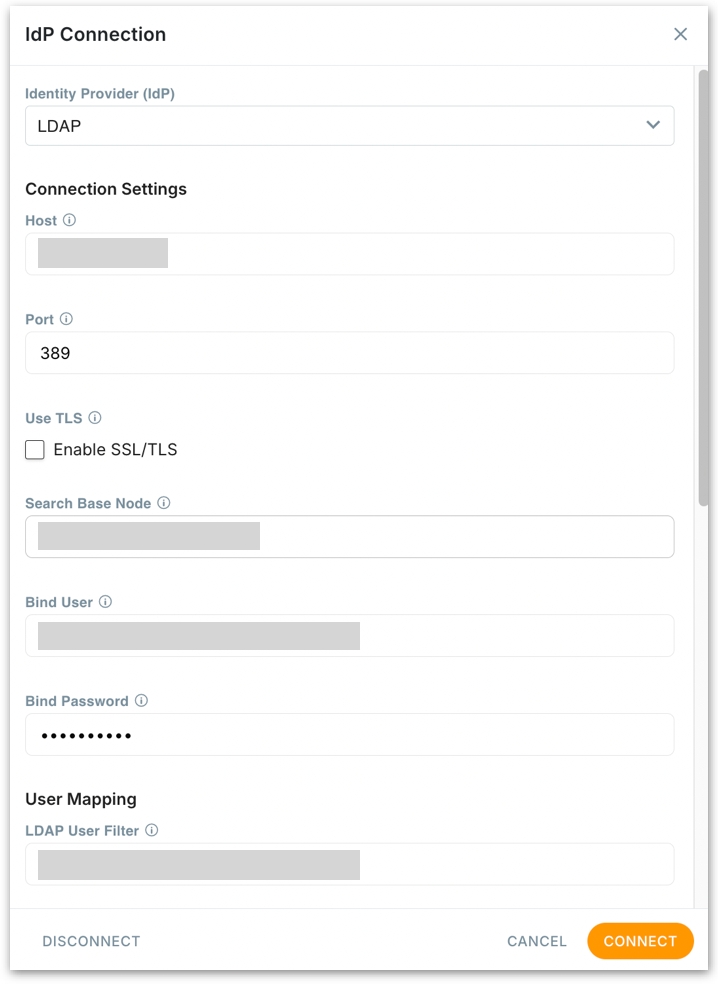IdP Connection Setup
Configure IdP connections with Azure AD or LDAP to enable secure SSO, centralized user sync, and automated group management using trusted directory sources.
Under Synchronization tab, click on Edit button to configure the IdP connection.

Azure AD IdP Connection
Use the Azure AD IdP Connection to link Tellius with Azure AD for SSO and centralized user/group management.

Identity Provide (IdP): Provide the IdP in the dropdown. For now, only Azure AD is supported.
Tenant ID: Unique identifier for your Azure tenant.
Client ID: Application ID registered in Azure.
Client Secret: Secure key generated from Azure to authorize API access.
Click on Connect to establish connection between Tellius and Azure AD.
Click on Disconnect to break the connection and re-enables manual group management.
Click on Cancel to dismiss without saving changes.
LDAP IdP Connection
Use the LDAP IdP Connection to integrate Tellius with your enterprise directory (e.g., OpenLDAP/AD-LDS) for centralized auth and provisioning. Tellius binds to your LDAP server, securely queries users and groups (optionally via SSL/TLS), and maps LDAP attributes to user profiles.
Once connected, LDAP becomes the source of truth—Tellius syncs users/group memberships and disables manual edits to preserve consistency.

Identity Provider (IdP) Select LDAP from the dropdown. This enables LDAP-based user and group sync and sign-in.
Connection Settings
Host: The LDAP server’s hostname or IP address that Tellius will connect to.
Port: Network port on the LDAP server. Typical:
389for LDAP; if your server is configured for LDAPS, it’s commonly636. Use what your directory admin specifies.Enable SSL/TLS: Turn this on to encrypt the LDAP connection. Use it if your server requires or supports secure LDAP. Ensure the server certificate is trusted by your environment.
Search Base Node: The base DN where Tellius will start searching for users and groups. This should be the common root that contains your directory entries.
Bind User: The full DN of the service account Tellius uses to bind (authenticate) and run searches. This account needs read access to user and group objects.
Bind Password: Password for the Bind User above. Stored securely and used for directory queries.
User Mapping
These fields tell Tellius which users to sync and how to map LDAP attributes into Tellius user profiles.
LDAP User Filter: LDAP search filter to select which entries are considered users. Use a stricter filter if needed (e.g., add location/org OU constraints).
Username Attribute: LDAP attribute to use as the Tellius username (the login name). Pick an attribute that is unique and stable across your directory.
First Name Attribute: LDAP attribute mapped to the user’s first name in Tellius.
Last Name Attribute: LDAP attribute mapped to the user’s last name in Tellius.
Email Attribute: LDAP attribute mapped to the user’s email in Tellius. (If your directory uses a different attribute, provide that exact attribute name here.)
Group Mapping
These settings control which groups to sync and how Tellius reads membership.
LDAP Group Filter: LDAP search filter to find group entries that Tellius should sync. Example:
(& (objectClass=groupOfUniqueNames) (ou={group_name})). Replace{group_name}at runtime with the actual group name you want Tellius to match. Adjust the filter to your directory’s group objectClass and OU structure.Group Member Attribute: The attribute on group objects that lists member DNs. Common alternatives in some directories are
memberormemberUid; use the one your groups actually use.Group Attribute: The attribute Tellius reads as the group’s name/identifier for mapping. Use the attribute that contains the readable group name you want to appear in Tellius.
Click on Connect to validate and establish the LDAP connection. On success, Tellius begins syncing users and groups using the mappings above. Click on Disconnect to remove the LDAP connection and re-enables manual group management inside Tellius (IdP will no longer be the source of truth).
Was this helpful?